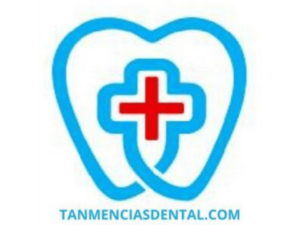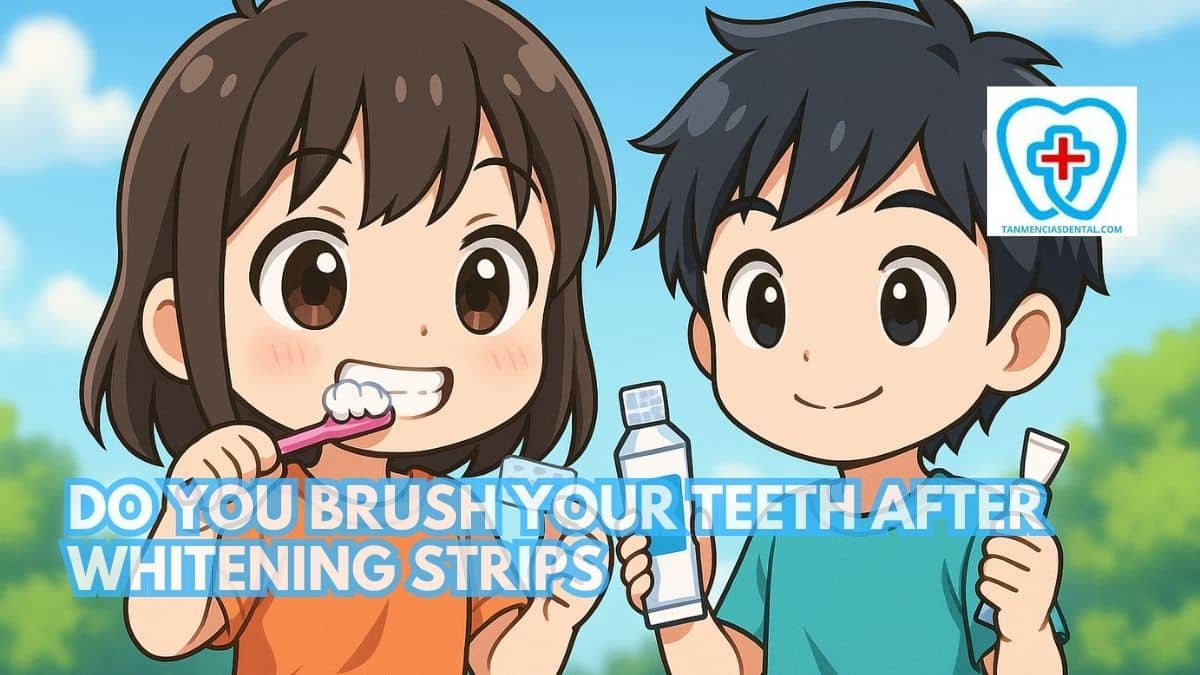Many people use whitening strips to make their teeth look whiter.
But a common question is: Do you brush your teeth after whitening strips?
Knowing when and how to brush can help you avoid tooth sensitivity and get better results.
We’ll explain what to do before and after using whitening strips to keep your teeth healthy.
We also cover tips, common mistakes, and when to ask your dentist for help.
1. Brushing After Strips: Yes, But With a Gentle Touch
Brushing your teeth after using whitening strips is a good way to clean off any leftover teeth whitening gel.
However, your teeth and gums may be more sensitive right after using a whitening product, so it’s important to brush carefully.
Use a soft-bristled toothbrush and a gentle, non-abrasive toothpaste to avoid scratching your enamel or irritating your gums.
Wait about 30 minutes after removing the strips before brushing, so the whitening agents have time to fully absorb.
Avoid using whitening or charcoal toothpaste right after, as they can be too harsh.
Brushing gently helps protect your enamel while still keeping your mouth clean.
Doing this regularly also helps you maintain oral hygiene and keeps your whitening results looking fresh.
🦷 Making Dental Visits Fun and Easy: What a Kids’ Dentist Does
2. Why Waiting After Applying Strips is Important
Waiting a bit after removing whitening strips before brushing is crucial for maximizing the treatment’s effectiveness.
The whitening agents in the strips need time to fully absorb into your enamel and break down stains.
Brushing too soon can remove these agents before they have finished working.
The recommended waiting period is at least 30 minutes to ensure the whitening process is complete.
This waiting period also helps minimize any potential sensitivity or irritation.
🦷 How a Family Dentist Keeps Everyone’s Oral Care Simple and Stress-Free
3. Brushing Before Strips: Prepping for a Whiter Smile
Brushing your teeth before applying whitening strips ensures that your teeth are free of surface plaque and food particles.
This step allows the whitening agents to contact your enamel directly, improving their effectiveness.
Make sure your teeth are clean and dry before applying the strips, as moisture can affect adhesion and efficacy.
Brushing beforehand creates an optimal environment for the strips to work, leading to a more even whitening result.
Proper preparation can make a significant difference in the outcome of your whitening treatment.
🦷 Why You Should Never Skip Your Regular Dental Cleanings
4. Don’t Forget the Instructions: Each Brand May Differ
Different brands of whitening strips come with specific instructions that must be followed to ensure safe and effective use.
These instructions can vary in terms of application time, frequency of use, and aftercare recommendations.
Always read and follow the guidelines provided with your strips to avoid any adverse effects.
Ignoring the instructions can lead to uneven whitening, increased sensitivity, or even damage to your enamel.
Adhering to the manufacturer’s guidelines ensures you get the best results while protecting your teeth and gums.
🦷 How the Look and Feel of a Dental Office Shapes Your Visit

5. How Whitening Strips Work: Breaking Down Stains
Whitening strips contain active ingredients, typically hydrogen peroxide or carbamide peroxide, which penetrate the enamel to break down stains.
These chemicals react with the discolored molecules in your teeth, oxidizing them and making them less visible.
The process targets both surface stains and deeper discoloration, leading to a brighter smile.
Understanding this mechanism can help you appreciate the importance of using the strips as directed.
Proper use ensures that the active ingredients have enough time to effectively whiten your teeth without causing harm.
🦷 What Happens When Dentists Repair Chipped Teeth?
6. Why Whitening Strips Don’t Work on Crowns, Fillings, or Veneers
Whitening strips are made to work on natural teeth, not on dental restorations like crowns, fillings, or veneers.
These man-made materials do not react to whitening agents the same way as tooth enamel.
If you use strips and have restorations, your teeth may end up with different shades.
This can make your smile look uneven, especially if the restoration is in a visible spot.
Before starting whitening, talk to your dentist to understand what results you can expect.
🦷 Can Wisdom Teeth Roots Cause Problems When Being Pulled?
7. Dealing with Sensitivity After Whitening
Sensitivity is a common side effect after using whitening strips, often caused by the active ingredients penetrating the enamel.
If you experience sensitivity, switch to toothpaste designed for sensitive teeth to help alleviate discomfort.
Avoid extremely hot or cold foods and drinks, as they can exacerbate the sensitivity.
Using a soft-bristled toothbrush and avoiding aggressive brushing can also help minimize irritation.
If sensitivity persists, consider reducing the frequency of whitening treatments or consulting your dentist for advice.
🦷 Are Electric Toothbrushes Truly Waterproof? What You Need to Know
8. Maintaining Your Bright Smile: Brushing and Flossing Tips
To keep your teeth white after using whitening strips, maintaining good oral hygiene is essential.
Brush your teeth at least twice a day with a whitening toothpaste to help prevent new stains from forming.
Floss daily to remove plaque and food particles between your teeth, which can contribute to discoloration.
Regular dental checkups and cleanings can also help maintain your bright smile.
Consistent oral care not only preserves your whitening results but also promotes overall dental health.
🦷 Why Do Full Dental Implants Cost More Than Other Treatments?
9. Watch Out for Staining Foods and Drinks
After using whitening strips, it’s important to avoid foods and drinks that can stain your teeth.
Beverages like coffee, tea, red wine, and soda can quickly discolor your newly whitened teeth.
Similarly, foods such as berries, tomato sauce, and soy sauce can contribute to staining.
If you consume these items, rinse your mouth with water or brush your teeth soon after to minimize their impact.
Staying mindful of your diet can help you maintain the results of your whitening treatment for longer.
🦷 How Eating Soft Foods After Wisdom Teeth Removal Helps You Heal Faster
10. When to Consult a Dentist Before Using Strips
Before using whitening strips, it’s advisable to consult your dentist, especially if you have dental issues.
Conditions like gum disease, cavities, or sensitive teeth can be aggravated by the whitening agents in the strips.
Your dentist can assess your oral health and recommend the best approach for whitening your teeth safely.
They may suggest alternative treatments or provide professional whitening options.
Consulting a dentist ensures you achieve the best results without compromising your dental health.
🦷 Ways to Close Teeth Gaps Without Wearing Braces
11. At-Home Strips vs. Professional Whitening: Understanding the Options
At-home whitening strips offer convenience and affordability but may not be as effective as professional treatments.
Professional whitening, performed by a dentist, typically uses stronger agents and advanced techniques for more dramatic results.
While at-home strips are suitable for minor discoloration, professional treatments are better for severe staining or faster results.
Consider your whitening goals and consult your dentist to determine the best option for you.
Understanding the pros and cons of each method helps you make an informed decision.
🦷 Qualified Dentist in Marikina
👨⚕️ Conclusion
Brushing your teeth after using whitening strips is beneficial, but should be done with care.
Using a soft-bristled toothbrush and waiting at least 30 minutes can help protect your teeth and gums.
Following the instructions and maintaining good oral hygiene practices ensures you get the best results from your whitening treatment.
By avoiding staining foods and consulting your dentist as needed, you can enjoy a brighter smile safely.
Remember, proper care and attention to detail can make all the difference in achieving and maintaining your desired results.
😊 Self-Promotion
Visit Tan-Mencias Dental Clinic in Parang, Marikina City, where your smile is our priority.
Our friendly and experienced team is here to provide top-notch dental care in a welcoming environment.
For any questions or to schedule an appointment, call us at 9171451074, message us on our Facebook page, or use the contact form on our website.
We are dedicated to ensuring your dental health and comfort.
Come experience the difference at Tan-Mencias Dental Clinic!

